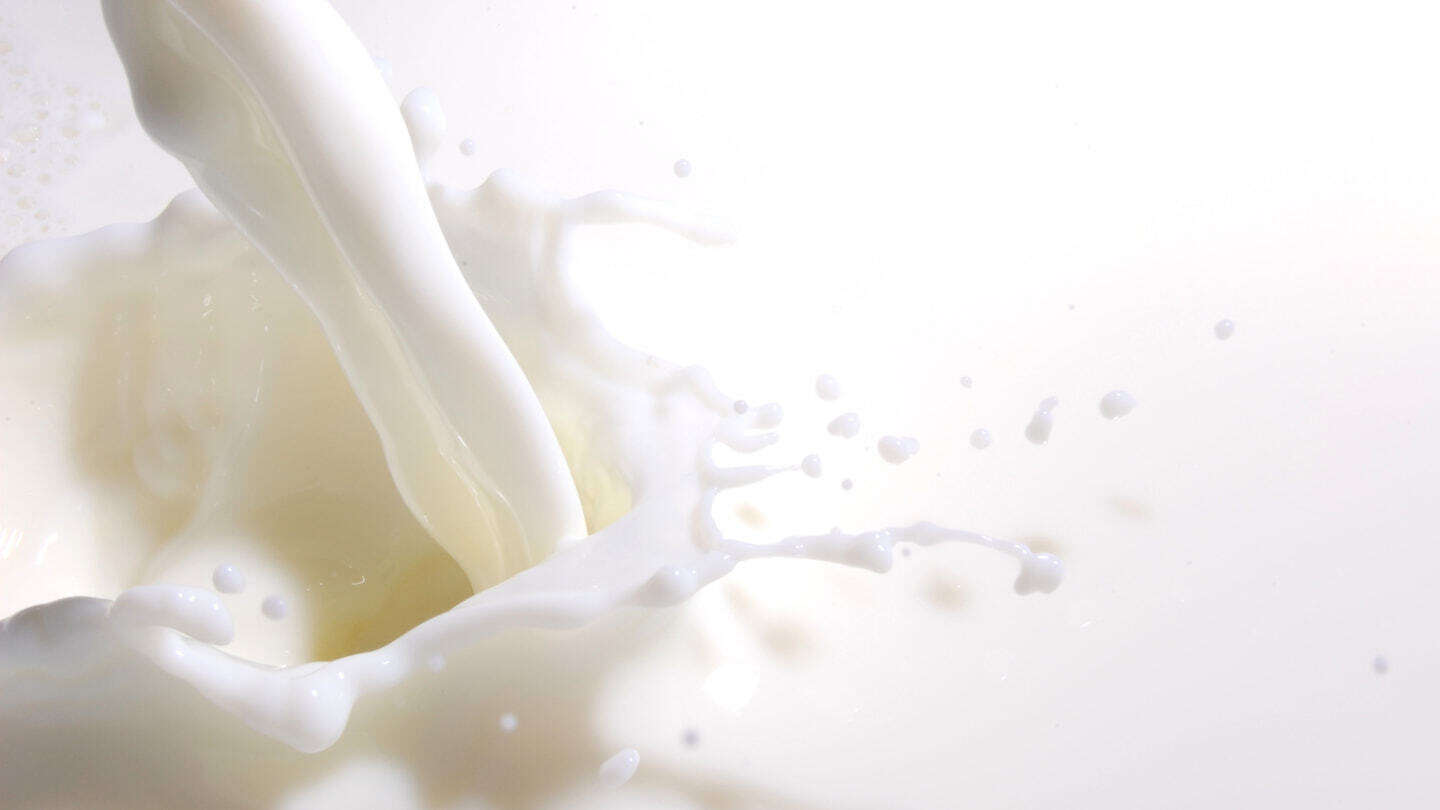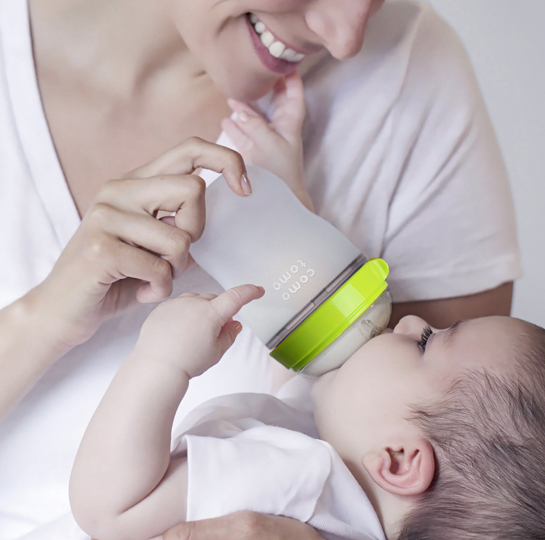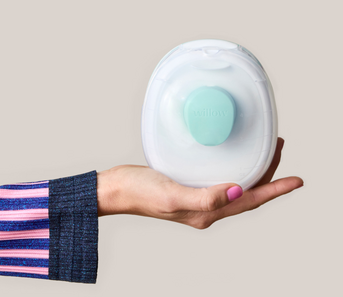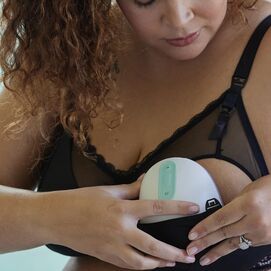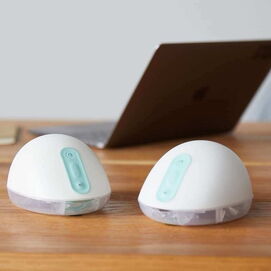Whether you’re gearing up to return back to work, or are simply overwhelmed by the 24/7 breastfeeding process, the transition from breastfeeding to formula is a perfectly acceptable solution. Formula provides the same amount of key nutrients for your baby as breast milk, and you can still form that inseparable bond with your little one. Keep reading to learn everything you need to know about transitioning from breastfeeding to formula.
Breast Milk vs. Formula: The Key Differences
Before transitioning from breastfeeding to formula, it’s first important to understand the key differences between the two. While both breast milk and formula contain the necessary nutrients for your baby to grow big and strong, your baby may grow faster on a formula diet. This is because unlike formula, the amount of breast milk you produce can change with each feeding or pumping. Because of this, breast milk is often more effective at teaching babies to stop eating when they are full.
While formula has the same amount of nutrients as breast milk for babies, it does not contain some of the special antimicrobial properties that turn breast milk into liquid gold. Breast milk may also be easier to digest for some babies, while formulas may be helpful for babies with dietary needs.
Why Transition from Breast Milk to Formula?
Transitioning from breast milk to formula can be helpful for a number of different reasons. Introducing formula can help wean your baby from breast milk when you are ready. Whether you’re returning back to work, having your partner help with the feeding process, feeling overwhelmed, or experiencing a low milk supply, transitioning from breast milk to formula can be highly beneficial for your lifestyle.
Remember that the longer you are able to breastfeed, the more health benefits you’ll experience. Even as you introduce formula into your baby’s diet, continue to breastfeed when possible (more on this later!).
Our Favorite Bottles
Our Favorite Bottles
You want only the best bottle for your pumped milk. For breastfed babies, we love Comotomo bottles.
When to Switch from Breast Milk to Formula
There is no perfect answer for when to switch from breast milk to formula, in reality, it is what is best for you and your baby. According to medical experts, breastfeeding for at least one year is the most effective. But that isn’t always possible for new moms. There may be lifestyle changes like returning to work, or medical reasons that stop you from breastfeeding as much as you need to. Because of this, starting your baby’s transition from breast milk to formula happens when it is right for you and your baby’s health.
The most common sign that a baby is ready for formula is if they are showing signs of slow growth or continued hunger after feedings. A full baby is a happy baby, so be mindful of their monthly, even weekly, weight gain.
How to Transition From Breast Milk to Formula
It is perfectly OK to give formula to babies while breastfeeding. Feeding your baby formula in addition to breast milk is called supplementing, and can be done for multiple different reasons, including just personal choice!
If you are starting your transition from breast milk to formula, it’s important to plan as much in advance as possible to let your baby get used to a new feeding regimen. If you have time, allow for at least two weeks in advance to begin supplementing the formula. Every baby adapts to formula differently; some will adjust immediately while others may take a few weeks.
If you’re just beginning to think about the breast milk to formula transition, below are some helpful tips for different methods moms use for weaning:
Gradual Weaning
Gradual weaning is great for moms who want to stop breastfeeding in the near future while slowly introducing formula to their baby. The end goal of gradual weaning is for a baby to be fully adjusted to formula by the end of the gradual weaning process. This process involves supplementing bottles for breastfeeding sessions until the baby is only on formula.
Partial Weaning
Partial weaning is best for when you want to continue breastfeeding, but still need to supplement some feedings with formula. During this time, feed your baby formula during certain periods of the day where it is more difficult for you to breastfeed. For example, feed your baby formula throughout the day, but still breastfeed at night and in the morning.
No Weaning Period
While it’s best to have some sort of weaning period, it’s not always possible to plan ahead. Remember that stopping breastfeeding can have an affect on your own body as well as your baby’s. Take as much time as you need to rest and lean on others for support as you and your baby transition.
How to Help Your Baby Learn to Use a Bottle
It’s not uncommon for breastfed babies to reject a bottle, but it can be stressful and frustrating, especially when you need to return back to your life fairly quickly. While babies can reject bottles at first, there are plenty of ways to help your baby adjust and begin feeding in no time.
-
Check in with yourself: Babies can sense stress. If the bottle transition isn’t working smoothly, take a break! Learning to bottle feed will take time, but we know you can do it.
-
Show your baby the bottle: In your baby’s eyes, a bottle is a foreign object. Show it the bottle before you feed so they can get familiar with it!
-
Warm the bottle nipple: Holding the bottle nipple under warm water before feeding can mimic the feeling of a breast.
-
Try different nipple sizes: Your baby may prefer a short or a long bottle nipple, play around with different types to determine which is easiest for them to feed from.
-
Use skin-to-skin contact: Part of the magic of breastfeeding is the bond you form with your baby while sitting skin-to-skin. You can still form this relationship and comfort your baby while bottle feeding!
-
Try different positions: Sometimes a breastfeeding position may remind your baby of breastfeeding. Try sitting them upright to bottle feed to teach them a new method of feeding.
Wherever you are in the breastfeeding to formula transition process, know that you are not alone. Each mama has their own journey and process, and we want to help every step of the way. Have more questions about feeding your baby? Visit our blog to learn all things lactation related. From combination feeding to pumping advice, we’ve got you covered.

